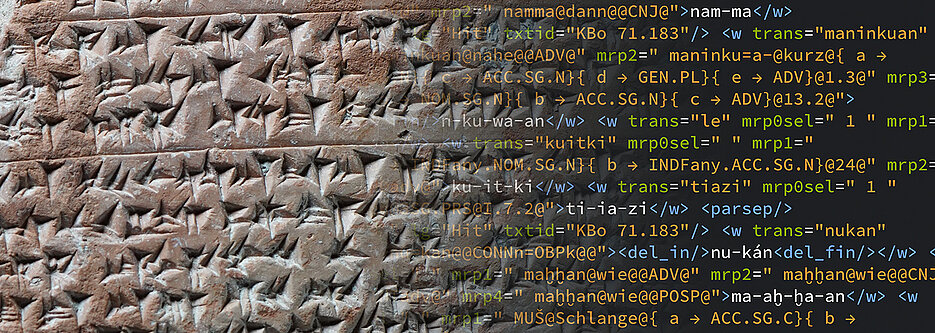Major milestone reached in digital Cuneiform studies: researchers from Mainz, Marburg, and Würzburg present an innovative tool that offers many new possibilities.

The UNESCO World Heritage Site of Boğazköy-Hattuša is located in the north of Turkey. It was once the capital of the Hittite Empire, a great power in the late Bronze Age around 1650 to 1200 BC.
The cuneiform tablets discovered there and in other Hittite sites represent one of the largest groups of texts from the ancient Near East. They include thousands of sources in Hittite, an early-attested Indo-European language, as well as numerous fragments in other Anatolian languages, alongside Sumerian, Akkadian, and Hurrian texts.
An innovative digital tool has been offering researchers and students online access to these historical sources since 2023: the Thesaurus Linguarum Hethaeorum Digitalis (TLHdig 0.1) which was launched on the Hethitologie-Portal Mainz platform (HPM). Ever since its initial launch, this thesaurus has become one of the digital tools that Hittitologists use every day, with more than 100,000 accesses per month.
Expansion of the Tool with Many New Options
This tool is now even more powerful: As TLHdig 0.2 it is comprising more than 98% of all published sources-approximately 22,000 XML text documents, many of which consist of multiple rejoined fragments. Currently the corpus consists of almost 400,000 transliterated lines. But that's not all: TLHdig 1.0, expected in late 2025, will offer complete coverage of all published texts.
Researchers can browse and search texts in transliteration or cuneiform and apply various filters for more complex queries. TLHdig is embedded within the infrastructure of Hethitologie-Portal Mainz and is integrated with various digital catalogue tools, media databases, and text editions.
Online Pipeline for New Text Publications
TLHdig is a community research tool. In compiling the corpus, the TLHdig team has drawn on digital and analogue resources developed by several generations of Hittitologists, including digital text edition projects on Hethitologie-Portal Mainz and the contributions of many individual scholars.
As a collaborative tool, TLHdig






